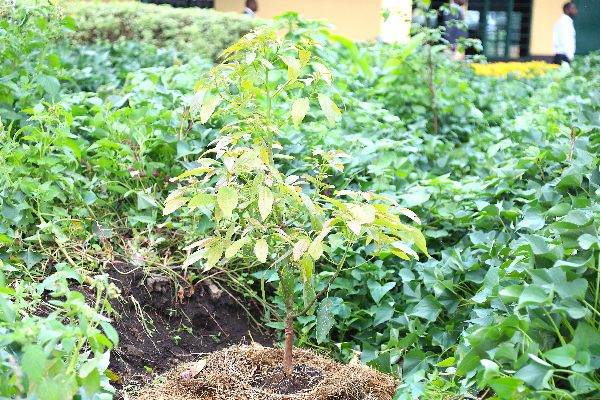
Rwanda, through the Ministry of Agriculture and Animal Resources (MINAGRI), has partnered with the International Union for Conservation of Nature (IUCN) and the African Plant-Based Food Alliance (APEFA) to transform food systems and boost climate-resilient farming practices across the nation.
At the heart of this initiative is the National High-Level Dialogue on Sustainable Agriculture, convened by IUCN in Kigali. Bringing together stakeholders from government, civil society, academia, farmers’ unions, and development agencies, the dialogue has sparked discussions on agroecological innovation and landscape stewardship.
A key focus of the dialogue is the “Five Fruits Per Household” campaign, an agroecological model designed to diversify diets, enhance soil health, and support biodiversity. By promoting the cultivation of fruit trees alongside staple crops, the initiative aims to rehabilitate degraded land, bolster ecological balance, and improve nutrition at the community level.
The IUCN-led sessions emphasized regenerative agricultural methods that restore and conserve natural ecosystems while enhancing food system resilience. Embracing nature-based solutions, such as intercropping, agroforestry, and sustainable land management techniques, low-input systems are being positioned as vital strategies to counter soil erosion, nutrient depletion, and biodiversity loss.
Government engagement played a critical role in steering the discussions toward measurable outcomes. Among the proposals reviewed were targeted incentives for farmers adopting sustainable practices, capacity-building workshops in rural areas, and stronger monitoring systems to track environmental impact. Authorities committed to aligning these efforts with Rwanda’s national development roadmap, including the fifth phase of the Strategic Plan for Agriculture Transformation (PSTA‑5) and the National Strategy for Economic Transformation (NST‑1).
Shortly after the dialogue, Rwanda’s Ministry of Environment and IUCN co-led the 17th National Cross-Sectoral Task Force meeting in Eastern Province, signaling momentum from strategy to implementation. Representatives from forestry, agriculture, academia, and private sectors convened in Bugesera to synchronize forest landscape restoration with sustainable agricultural investments.
Dr. Alphonce Guzha, Programme Manager for IUCN Rwanda, emphasized the interdependence of food systems and landscapes, noting that climate-resilient agriculture “cannot be overemphasized” in the face of intensifying climate shocks and soil degradation. He praised the collaborative task force for aiming to coordinate restoration and agrarian projects in support of Rwanda’s environmental and economic goals.

Meanwhile, the African Plant-Based Food Alliance (APEFA) is poised to bring its expertise in plant-based solutions to the table. Though its official program launch is pending, APEFA is expected to facilitate market linkages, nutrition campaigns, and research partnerships focused on plant-derived foods. By prioritizing pulses, grains, legumes, and fruits, APEFA’s role will be to reduce reliance on environmentally intensive crops and champion dietary diversity.
The tripartite partnership marks a coherent strategy to phase out mono-cropping systems and usher in regenerative practices across Rwanda’s farmlands. By joining forces, Rwanda, IUCN, and APEFA are addressing food security and climate adaptation in one stroke—supporting farmers to boost yields while rebuilding soil, conserving water, and protecting biodiversity.
As Rwanda moves to scale these approaches through pilot programs and community-based extension services, the partnership is expected to generate measurable benefits: improved nutrition, stronger livelihoods, healthier ecosystems, and alignment with international biodiversity and climate commitments.
This collaboration stands as a model for integrated sustainable development, and one to watch closely as it unfolds over the coming years.








